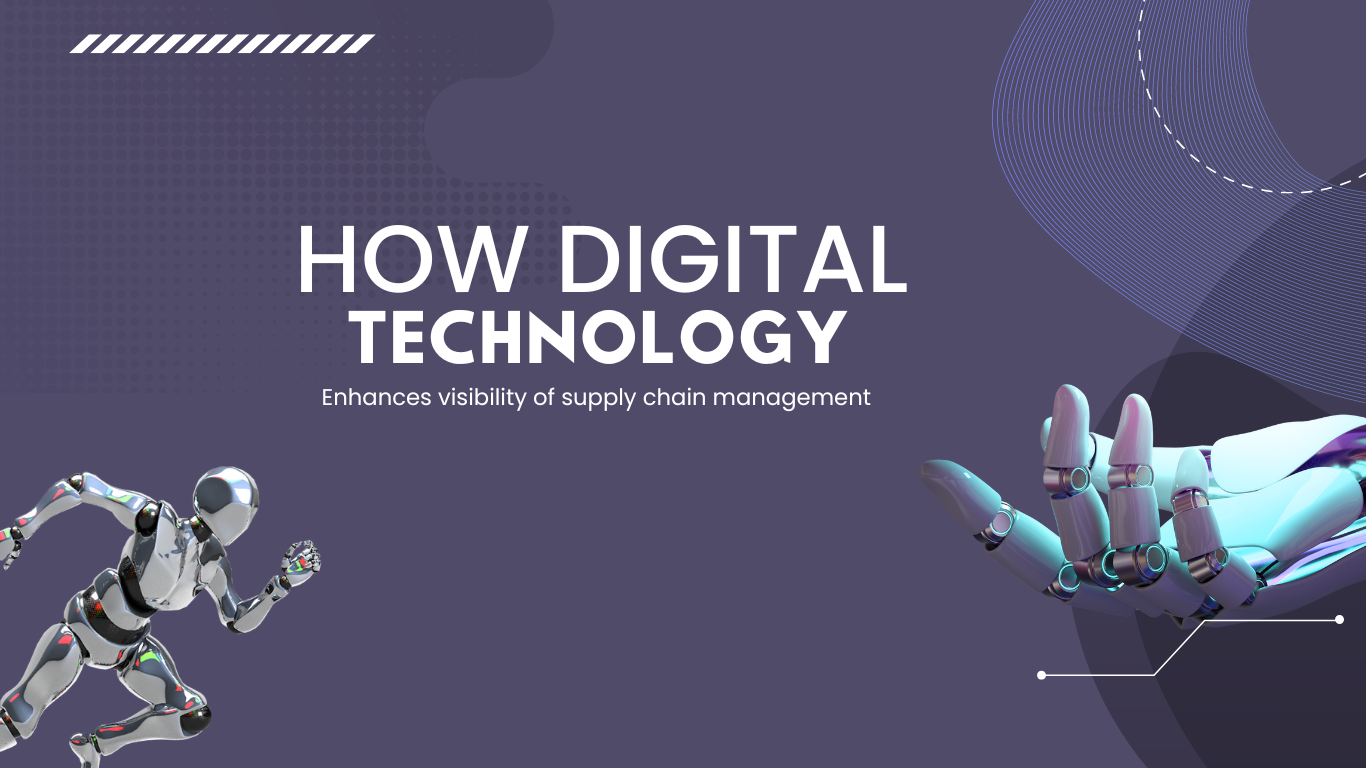

In the ever-evolving landscape of supply chain management, visibility stands as a crucial factor defining success. The ability to track goods, predict disruptions, and optimize operations in real time has become a cornerstone of efficient and responsive supply chains. This is where technology emerges as a game-changer.
The adoption of cutting-edge technological solutions has significantly transformed how businesses perceive and manage their supply chains. Technologies such as Radio-Frequency Identification (RFID), Internet of Things (IoT) sensors, and Artificial Intelligence (AI)-powered analytics are revolutionizing visibility across the entire supply chain spectrum.
One of the primary ways technology enhances visibility is through real-time tracking of inventory. RFID and IoT sensors enable organizations to monitor the movement and location of goods, allowing for precise inventory management. This heightened visibility aids in preventing stock outs, and minimizing excess inventory, and optimizing warehouse space.
Moreover, predictive analytics driven by AI and machine learning algorithms provide invaluable insights. These technologies analyze historical data, market trends, and various external factors to forecast demand accurately. By anticipating future needs, companies can proactively adjust their supply chain strategies, ensuring they meet demand while avoiding surplus or shortages.
Furthermore, technology enables end-to-end transparency in the supply chain. From raw material sourcing to final delivery, stakeholders have access to comprehensive and real-time data. This transparency facilitates better collaboration among partners, leading to streamlined processes and quicker issue resolution.
.
As technology continues to advance, supply chain management stands to benefit further. Innovations such as autonomous vehicles and drones for delivery, 3D printing for on-demand manufacturing, and augmented reality for warehouse operations are poised to redefine visibility and efficiency in supply chains.
In conclusion, the adoption of technology is pivotal in enhancing visibility in supply chain management. Through real-time tracking, predictive analytics, improved transparency, and innovative solutions, businesses can optimize their operations, minimize disruptions, and meet the demands of an increasingly dynamic market landscape. Embracing these technological advancements is not just a choice but a necessity for those aiming to thrive in the modern era of supply chain management.
How to build Supplier Relationship
It’s important that relationships with suppliers are properly managed to foster better service delivery. Here are some guidelines for effective supplier relationship management:
Clear Communication: Maintain open and transparent communication with suppliers to ensure both parties understand expectations, timelines, and potential challenges.
Understand Their Business: Take the time to understand your suppliers’ business models, processes, and constraints. This understanding can foster empathy and collaboration.
Establish Trust: Trust is the foundation of any relationship. Follow through on commitments, be honest, and address issues promptly to build trust with your suppliers.
Collaborative Approach: Instead of treating suppliers as mere transactional partners, involve them in decision-making processes and seek their input to find mutually beneficial solutions.
Performance Measurement: Establish key performance indicators (KPIs) and regularly review supplier performance. Provide constructive feedback and work together to address any areas for improvement.
Invest in Relationships: Take the time to build personal relationships with key contacts at supplier organizations. Attend industry events, schedule regular meetings, and demonstrate genuine interest in their success.
Continuous Improvement: Strive for continuous improvement in your supplier relationships. Solicit feedback, implement best practices, and adapt to changing circumstances to strengthen your partnerships over time.
By focusing on these strategies, you can cultivate strong and mutually beneficial relationships with your suppliers, which are essential for a resilient and efficient supply chain.
The Power of E-Procurement Processes
In today’s rapidly evolving business landscape, organizations are embracing digital transformation to enhance efficiency and stay competitive. One significant aspect of this transformation is the adoption of electronic procurement, or e-procurement, processes. E-procurement leverages technology to revolutionize traditional procurement methods, offering a range of benefits for businesses of all sizes.
Efficiency in Action:
E-procurement simplifies and accelerates the entire procurement lifecycle. From requisition to payment, digital systems automate routine tasks, reducing manual errors and saving valuable time. Online catalogs, accessible to authorized users, streamline the sourcing process, allowing for quicker and more informed purchasing decisions.
Cost Savings and Transparency:
Cost reduction is a pivotal advantage of e-procurement. By automating workflows, organizations minimize paper-based processes, decrease administrative overhead, and negotiate better terms with suppliers through data-driven insights. Moreover, the transparency embedded in digital procurement ensures better tracking of expenses, making it easier to identify cost-saving opportunities and enforce compliance with procurement policies.
Collaborative Decision-Making:
E-procurement platforms facilitate collaboration among stakeholders. Through real-time access to procurement data, teams can collaborate seamlessly, enhancing communication and decision-making. Automated approval workflows further expedite processes, ensuring that purchases align with organizational policies and budgets.
Supplier Relationship Management:
Building and maintaining strong relationships with suppliers is crucial for business success. E-procurement systems provide a centralized platform for managing supplier information, performance metrics, and negotiations. This transparency helps organizations select the best suppliers, negotiate favorable terms, and strengthen long-term partnerships.
Future Outlook:
As technology continues to advance, the future of e-procurement holds even more promise. Artificial intelligence, machine learning, and blockchain technologies are likely to play pivotal roles in optimizing procurement processes further. These innovations can enhance predictive analytics, automate routine decision-making, and provide immutable records for increased security and trust.
In conclusion, e-procurement processes are a cornerstone of digital transformation in the business world. By embracing these technologies, organizations can not only achieve operational efficiency and cost savings but also foster collaboration, strengthen supplier relationships, and ensure compliance in an ever-changing marketplace.